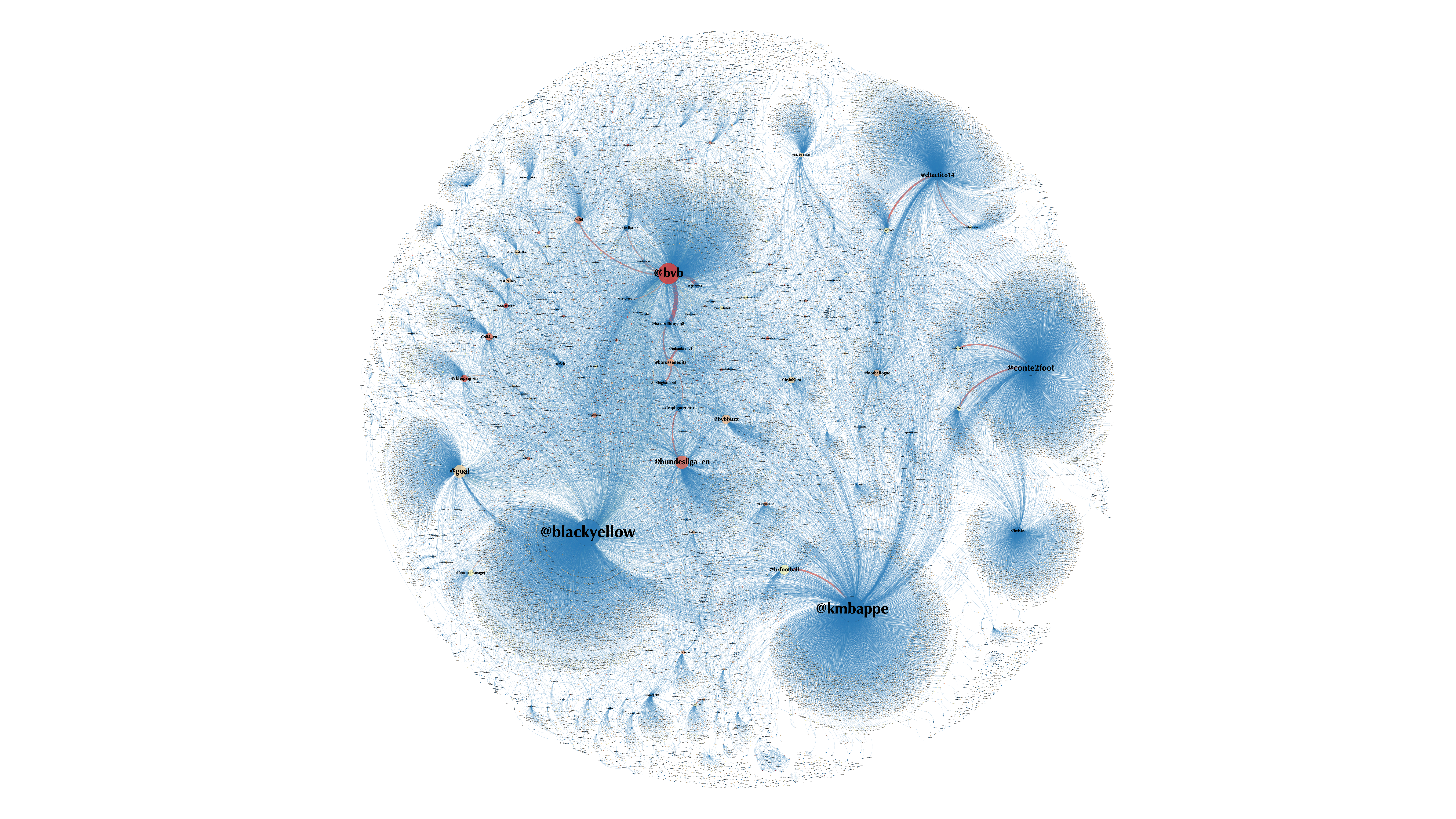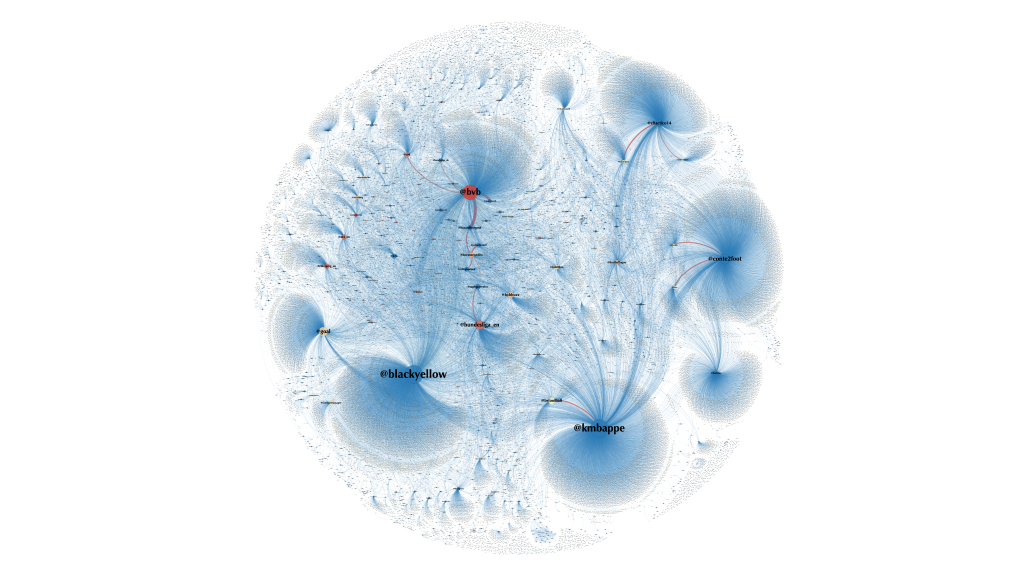Yesterday I wrote about my feelings in relation to the new normal in sports broadcasting when the Bundesliga resumed its season behind closed doors [Football Without Fans during the New Coronavirus Pandemic Lockdown]. In that post one of my main argument was that the new normal in sports broadcasting has provided an opportunity for audiences to consume traditional backstage and frontstage performances by athletes, coaches, and referees. In special I have focused on the voices of those actors within the interactive theatre that we known as football stadia, and how they were silenced by fans’ in-stadia performances.
While I was watching the Ruhr Derby, I was also collecting the Twitter user network by following all early games’ official hashtags (#bvbs04; #rblscf; #tsgbsc; #f95scp; #fcawob). The graph below is visualised in a way that the size reflects authority and the colour the out-degree within the network.

Firstly, it is interesting to note how the derby monopolised the conversation even when I have collected the tweets from all different early games. Secondly, it is that we have clubs’ twitter profiles – in German and on their different languages – and the Bundesliga’s twitter profile as having stronger out-degree than traditional media outlets (redder). In a way, this reinforces other posts I wrote about the digital disruption on the sports media ecology [Media Disruption in Sport; Para-Social Interactions, Social Media, and Sport; and Media Spreadability and Sport].
But for me what was really interesting to see in this graph was the prominence of common users in respect of authority (bigger sizes). If we focus to our right of the graph we can see three big clusters and a fourth small one just above the official Dortmund twitter profile (the big red @bvb node). But who are those individuals and what have they tweeted during the game that made them so prominent? Well, all of them have tweeted about this particular incident during the Ruhr Derby (see tweet below).
For me this example highlights what I have discussed yesterday about the performances that we as audiences start to consume in the new normal of sports broadcasting. What the French defender Todybo said to the Norwegian wonder kid Håland would have gone unnoticed because of all the noises produced by in-stadia supporters. This new normal allows us this access to what really happens within the four lines that before only a handful would have access to.
But also, what is interesting is how this particular tweet – as the other three I have pointed out previously – spread during the game to a point where those users became as prominent in authority as official twitter profiles.
This actually made me reflect on the notion of football without fans that I have mentioned yesterday. Were they actually absent from the game? Or what do we really need is a new normal way of understanding unorthodox consumption practices that disregard being-there as necessity. Because that participatory audience in this interactive theatre known as football has just migrated to another space.
Can we really say that a football game can be played without fans?

Leave a comment